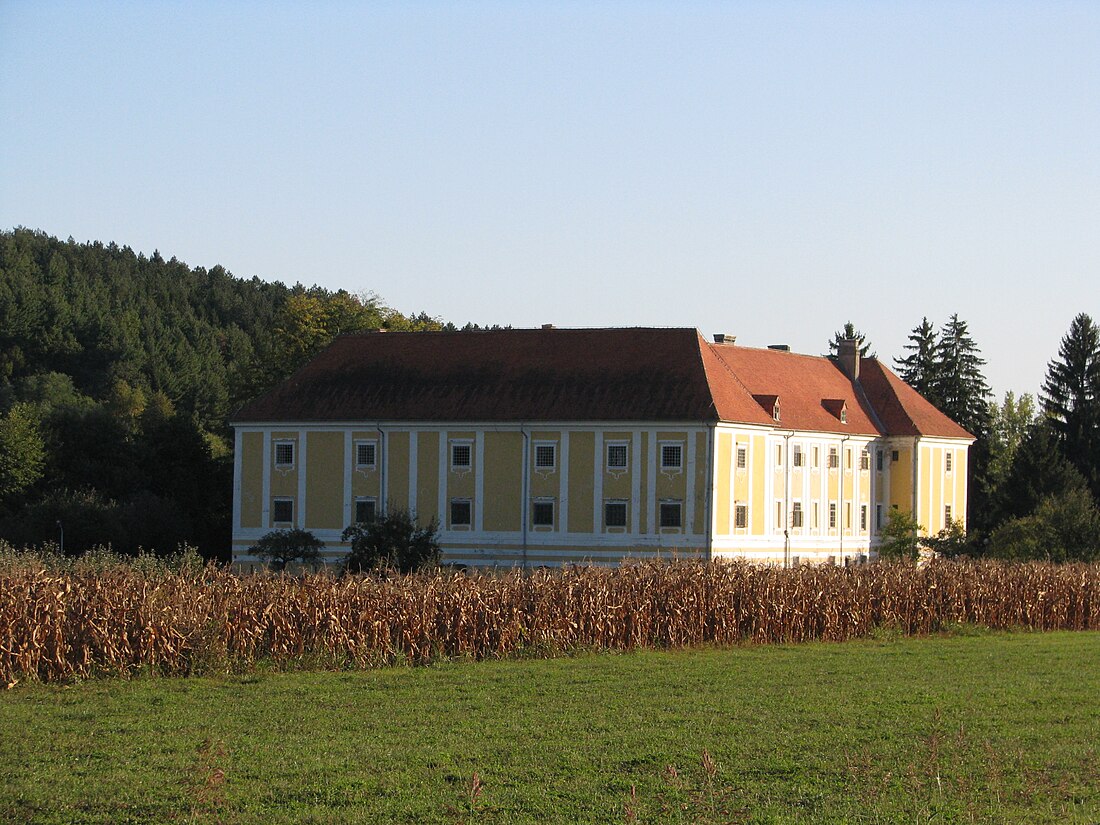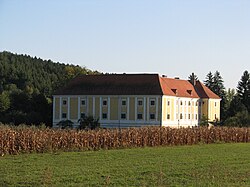Top Qs
Timeline
Chat
Perspective
Lobor concentration camp
From Wikipedia, the free encyclopedia
Remove ads
The Lobor concentration camp or Loborgrad camp (Croatian: Koncentracijski logor Lobor) was a concentration camp established in Lobor, Independent State of Croatia (modern-day Croatia) in the deserted palace of Keglevich family. It was established on 9 August 1941, mostly for Serb and Jewish women and children. The camp was established and operated by Ustaše, with 16 of its guards being members of the local Volksdeutsche community. Its inmates were subjected to systematic torture, robbery and murder of "undisciplined" individuals. All younger female inmates of the Lobor camp were subjected to rapes. More than 2,000 people were inmates of this camp and at least 200 died in it. All surviving children and women were transported to Auschwitz concentration camp in August 1942 where they all were killed.
Remove ads
Establishment
The Lobor concentration camp was established on 9 August 1941, mostly for Serb and Jewish children and women.[2][3][4] The camp was established in the deserted palace of the Keglevich family.[5] It was established, operated, and controlled by the Ustasha Surveillance Service subordinated to the Main Ustaša Headquarters and the guards were members of the German ethnic community (Volksdeutsche), 16 in total.[6] The maximum capacity of this camp was 800 prisoners.[7]
Remove ads
Inmates
Summarize
Perspective
Because of the significant proportion of children among its prisoners, this camp was categorized as a children's concentration camp, along with Jablanac, Mlaka, Bročica brickyard, Uštica, Sisak, Jastrebarsko and Gornja Rijeka.[8] According to some sources, the total number of children held in concentration camps in Croatia in 1942 was at least 24,000.[9] The first contingent of inmates numbering 1,300 people was transported to Lobor camp from Kruščica concentration camp.[10] The number of women and children inmates in Lobor camp reached 1,500.[11] All younger female inmates of the Lobor camp were subjected to rapes by the commanding officers and guards,[12] which resulted in pregnancies in girls as young as 14 years old.[13] Besides systematic rapes, the inmates were subjected to torture, robbery and murder of "undisciplined" individuals.[14] At least 200 women and children died in Lobor camp.[15] There was no mass killing of inmates in Lobor, but 150 inmates died because of a typhoid epidemic.[16]
Around 2,000 Jewish women and children were inmates of this concentration camp during its existence.[17] In the period between 13 and 28 August 1942 all children and women that survived were transported to Auschwitz concentration camp where they all were killed.[18][19][20]
Remove ads
Aftermath
In 2002 the Home for Mentally ill Adults Lobor-Grad was established at the location which housed the camp. According to its website, during the World War II its building was the almshouse of The Society for the Suppression of begging and supporting sick.[21]
References
Sources
Further reading
Wikiwand - on
Seamless Wikipedia browsing. On steroids.
Remove ads


